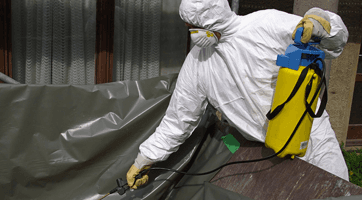Asbestos and removal work of Asbestos with its types and associated fibers
Asbestos is a normally happening stringy silicate mineral. There are six sorts, which are all made out of long and slim sinewy gems, every fiber is made out of numerous minuscule “fibrils” that can be delivered into the climate by scraped spots and different cycles. Asbestos is a superb electrical cover and is exceptionally heat-safe, so for a long time, it was utilized as a structural material. Notwithstanding, it is currently an infamous wellbeing and security risk and the utilization of asbestos as a structural material is illicit in numerous nations. Inward breath of asbestos strands can prompt different genuine lung conditions, including asbestosis and disease.
What is asbestos removal work?
Asbestos removal work is any work that includes the removal of asbestos or asbestos-containing material from its place of establishment.
Instances of Asbestos Removal Northampton work include:
- Removal of asbestos-creased rooftop sheets.
- Removal of asbestos roof sheets.
- Removal of asbestos protection from pipelines.
- Removal of asbestos gaskets.
Types and related filaments

Six mineral sorts are characterized by the EPA as “asbestos” including those having a place with the serpentine class and those having a place with the amphibole class. Every one of the six asbestos mineral sorts is known to be a human cancer-causing agent. The noticeable strands are themselves each made out of millions of tiny “fibrils” that can be delivered by scraped area and different cycles.
Serpentine
Serpentine class filaments are wavy. Chrysotile is the lone asbestos individual from the serpentine class.
Chrysotile
Chrysotile, CAS No. 12001-29-5, is acquired from serpentinite rocks which are normal all through the world. Its glorified substance recipe is Mg3(Si2O5)(OH)4. Chrysotile shows up under the magnifying lens as a white fiber. Chrysotile has been utilized more than some other sort and records for about 95% of the asbestos found in structures in America. Chrysotile is more adaptable than amphibole kinds of asbestos and can be turned and woven into the texture. The most well-known use was folded asbestos concrete material basically for storehouses, distribution centers, and carports. It might likewise be found in sheets or boards utilized for roofs and now and again for dividers and floors. Chrysotile has been a segment in joint mixtures and a few mortars.
Amphibole
Amphibole class filaments are needle-like. Amosite, crocidolite, tremolite, anthophyllite, and actinolite are individuals from the amphibole class.
Amosite
Amosite regularly alluded to as earthy coloured asbestos, is an exchanging name for the amphiboles having a place with the cummingtonite-grunerite strong arrangement series, usually from South Africa, named as a fractional abbreviation for “Asbestos Mines of South Africa”. One equation given for amosite is Fe7Si8O22(OH)2. Amosite is seen under a magnifying lens as a dark white glassy fiber. It is found most now and again as a fire retardant in warm protection items, asbestos protecting sheets, and roof tiles.
Crocidolite
Crocidolite, ordinarily known as blue asbestos, is the sinewy type of the amphibole riebeckite, discovered basically in southern Africa, yet in addition in Australia and Bolivia. One equation given for crocidolite is Na2FeII 3FeIII 2Si8O22(OH)2. Crocidolite is seen under a magnifying instrument as a blue fiber. Crocidolite ordinarily happens as delicate friable strands. Asbestiform amphibole may likewise happen as delicate friable strands yet a few assortments, for example, amosite are usually straighter. All types of asbestos are fibrillar in that they are made out of filaments with breadths under 1 micrometer in heaps of extremely incredible widths. Asbestos with especially fine strands is additionally alluded to as “amianthus”.

